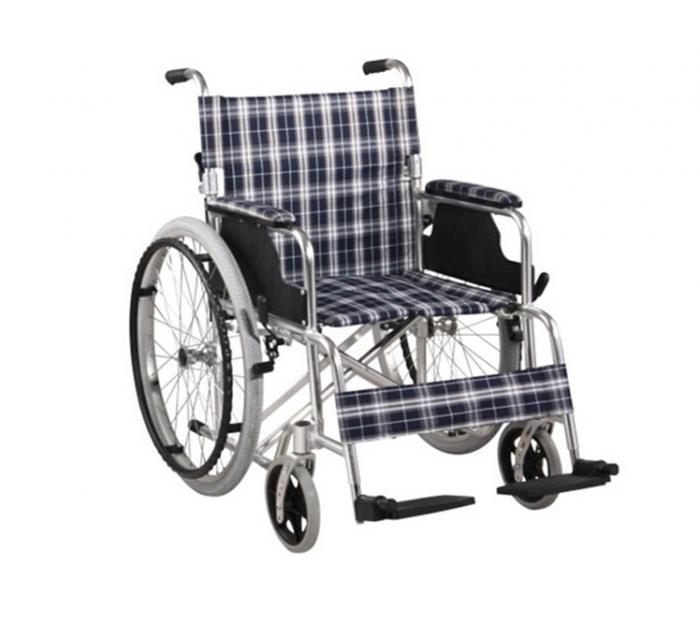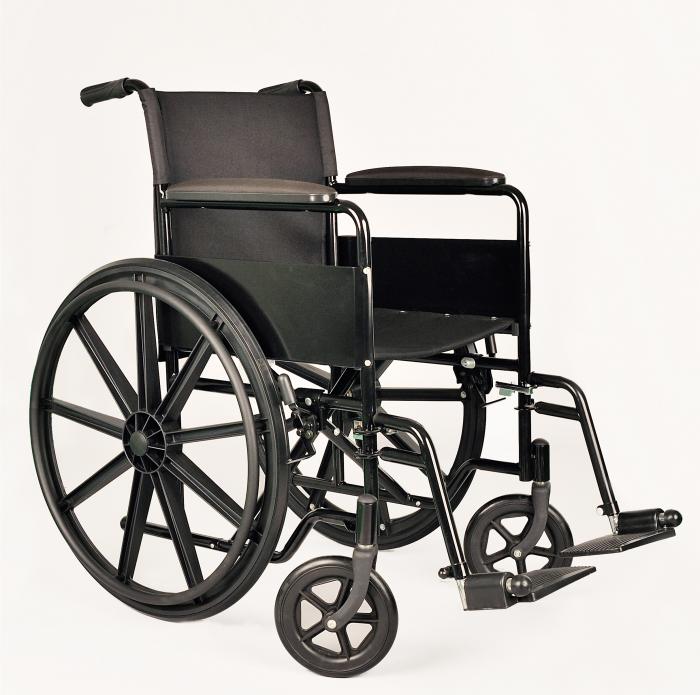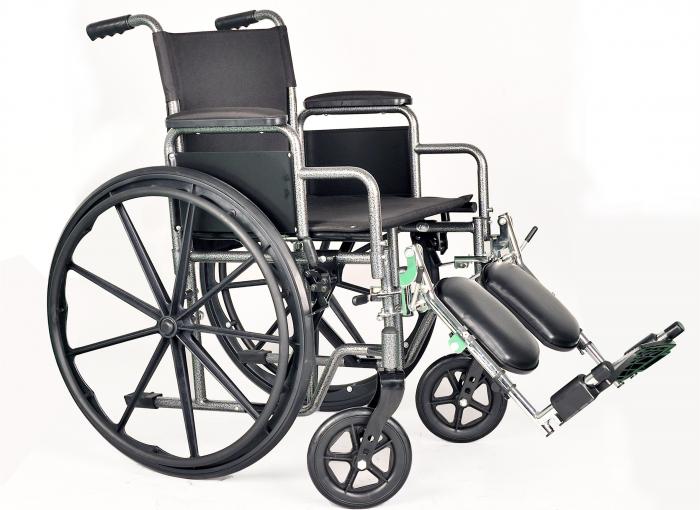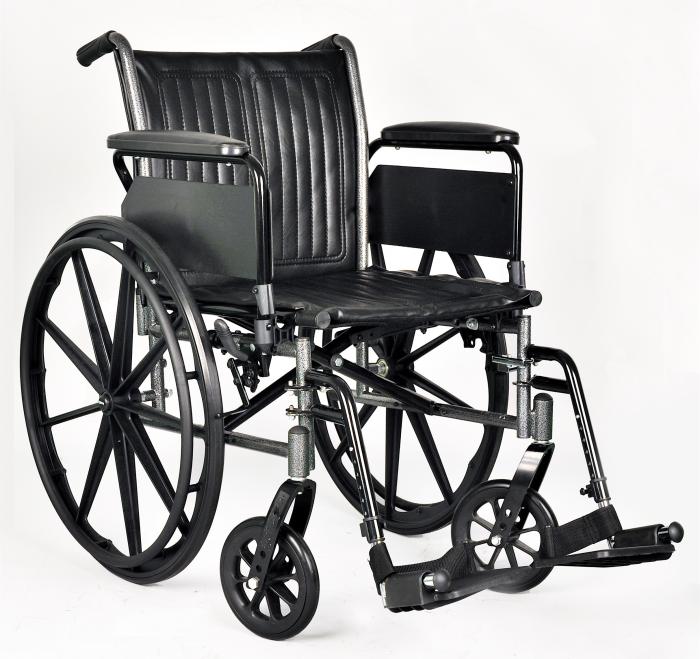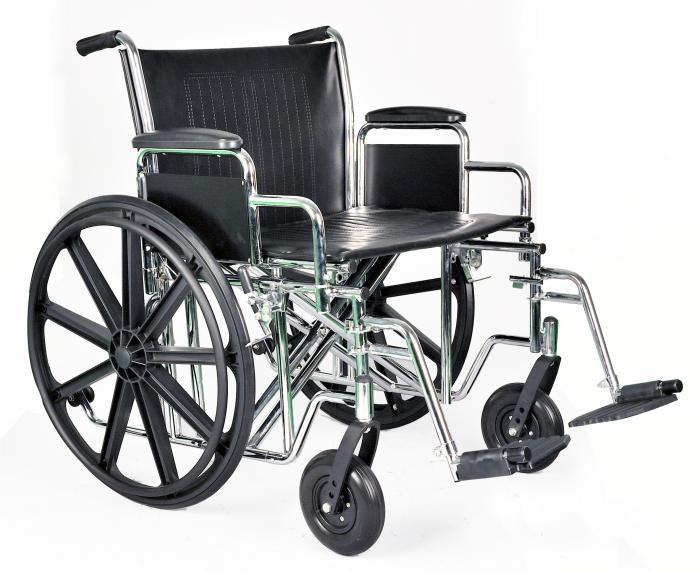| Name: | Aluminum Wheelchair |
|---|---|
| Model No.: | BES-WL024 |
| Product Name: | Aluminum Wheelchair |
| Brand: | BESCO |
| MOQ: | 50 units |
| Keywords: | Aluminum Wheelchairs,Aluminum Rigid Wheelchairs,Lightweight Wheelchairs,Folding Wheelchiars |
| Sample: | Available |
| Lead time: | 25 days |
| Payment Term: | T/T in advance |
| Country of Original: | China |
| Weight Capacity: | 220 kgs |
| Port of Loading: | Jiujiang |
| Factory Address: | Jiangmen |
| Office: | Zhengzhou,China |
Products Description
Folding Lightweight Aluminum Wheelchair
Specification and description:
Fixed armrest and footrest Drop back
Solid Rubber Tire (ABS rear wheel )
Chassis above Ground:Aluminum tube
With brake,foot belt
H-Wheel aluminum tube
Hand wheel:Aluminum tube
Armrest:Nylon
Front Wheel:8" Solid Rubber Tire
Back Wheel:24" Solid PU Tire
Cushion:Nylon
Foot Pedal:Plastic
Guard Board:Plastic
Handle Grove:Nylon
Overall height:880
Overall width:630
Seat width:460mm 18inch
Backrest height:420
Hand rim diameter:502mm
Armrest height:200mm
Carton dimension:940 x 300 x 920mm
Weight capacity:100kg
Net weight:12kg
Gross weight:14kg
Packing:Stander exporting canton
| Model No. | Seat width | Load capacity | N.W | G.W | Dimension | Packing |
| BES-WL024 | 46cm | 100kg | 12 | 14 | 94*39*90 | 1pc/cn |
An aluminum wheelchair is a mobility device where the frame and other components are primarily constructed from aluminum alloy, offering advantages like lightweight design, high strength-to-weight ratio, corrosion resistance, and affordability compared to materials like titanium. These features make them durable, portable, and a popular choice for individuals with limited mobility.
Key Characteristics & Benefits
Lightweight and Portable:
Aluminum is a lightweight metal, making aluminum wheelchairs easier to lift, fold, and transport, which is especially helpful for users and caregivers.
High Strength-to-Weight Ratio:
While not as strong as titanium, aluminum alloys provide enough strength and durability for many users' needs.
Corrosion Resistance:
Unlike steel, aluminum is resistant to rust and corrosion, which enhances the longevity of the wheelchair.
Affordability:
Generally, aluminum wheelchairs are more economical than those made from other advanced materials like titanium or carbon fiber, making them an accessible option.
Customization:
Aluminum frames can be anodized or coated in various colors, allowing for personal expression and aesthetic customization.
Considerations
Weight Capacity:
Aluminum wheelchairs generally have a lower load-bearing capacity compared to steel wheelchairs, making them unsuitable for users with heavier weights.
Durability:
While durable, aluminum can be prone to scratches, dents, and other damage if not handled with care.
Vibrations:
Aluminum wheelchairs can transmit more vibrations, potentially causing discomfort or fatigue for the user.
Common Use:Aluminum wheelchairs are widely used by elderly individuals, people with disabilities, and patients with limited mobility to provide daily support and mobility in various environments.
To use an Aluminum wheelchair, first unlock the parking brakes, then adjust the footrests for proper leg support and position the armrests for comfort. To propel yourself, push the large rear wheels on their rims to move forward and backward, and turn by steering the large wheel on the opposite side of your intended direction of travel. Always secure the brakes and flip up the footrests before getting on or off the wheelchair to prevent accidents.
Preparation
Unlock the brakes: Before getting into the chair, ensure the parking brakes are disengaged.
Adjust footrests: Flip the footrests to their downward position so they support your feet at a 90-degree angle.
Position the wheelchair: Place the wheelchair close to the surface you are transferring from, making sure it's stable and the brakes are locked.
Using the Wheelchair
Propelling forward/backward: To move, grasp the outer rims of the large rear wheels and push them down to go forward or pull them up to go backward.
Turning: To turn, hold still the rim on one large wheel and push the rim of the opposite wheel forward.
Using ramps: When going up or down a ramp, ensure the ramp is stable and has proper traction. You may need to ask for assistance on steeper ramps, as they can generate a lot of torque.
Getting on and off
Secure the brakes: Always make sure the parking brakes are firmly locked before transferring on or off the chair.
Flip up footrests: Ensure the footrests are in the up position to avoid getting caught.
Transfer safely: Use the armrests for support and slowly move from the wheelchair to another surface, ensuring you are stable.
Folding and Storage
Fold: If the wheelchair needs to be folded, grasp the fabric seat at the front and back.
Collapse: Carefully fold down the back support and pull up the side seat straps to collapse the frame into a compact, easy-to-store shape.
Maintenance
Regular checks:
Routinely inspect the wheelchair to ensure it is secure and all parts are in good working order.
Cleaning:
Keep the contact surfaces clean of any debris that could reduce traction or cause issues during use.
